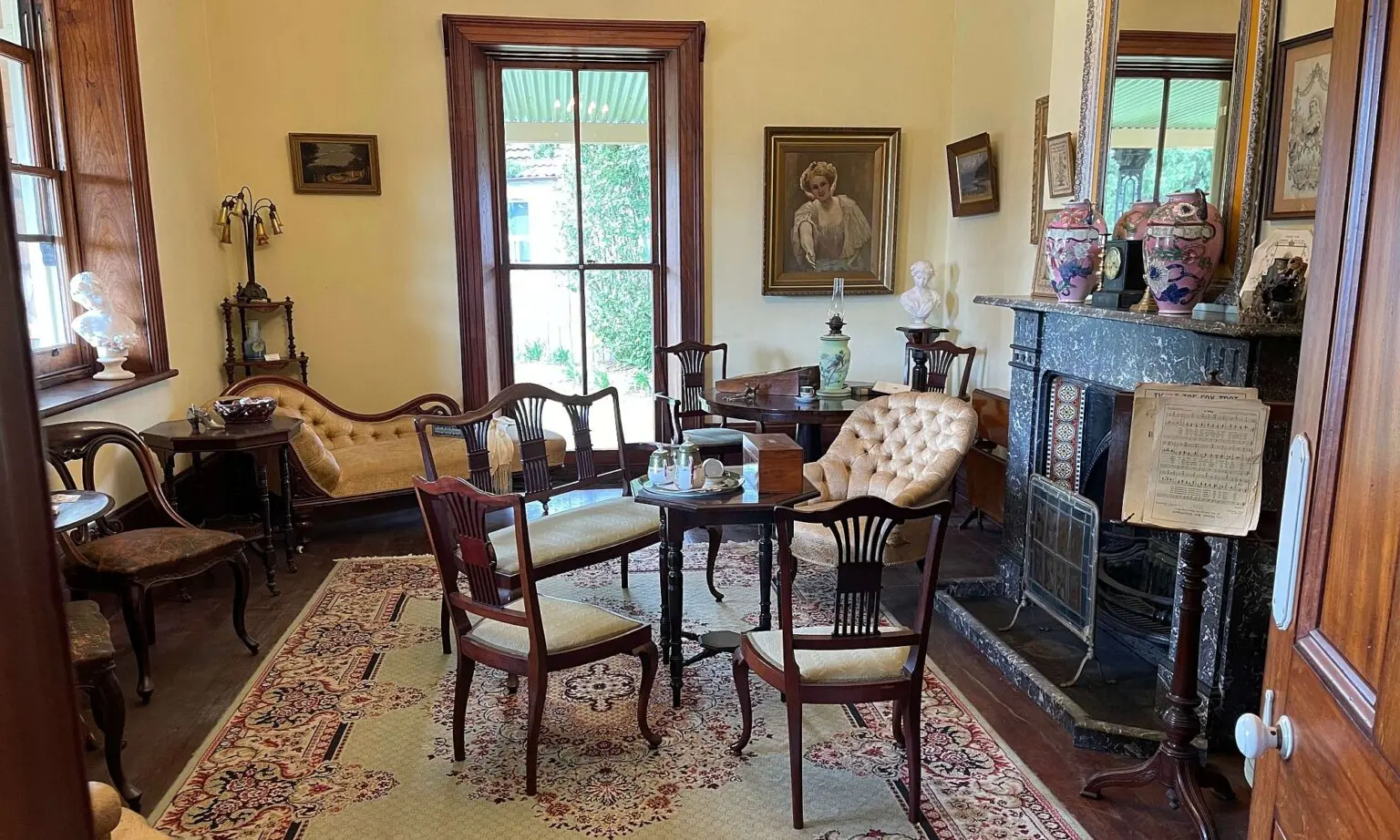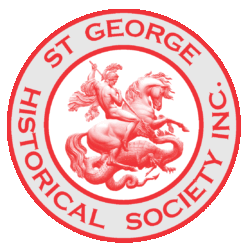by Valmai Long

Joseph Davis built “Lydham Hall” on Lydham Hill when he purchased 68 acres of the original land grant given to James Chandler by Governor Brisbane.

This was the first subdivision of Bexley. Large blocks of sandstone were hauled uphill to the building site from the quarry, now the corner of Villiers Street and Arlington Street. All interior woodwork is cedar, originally hand polished, and the marble carrara fireplaces were imported from Italy. James Benson was the stone mason and like most of the early settlers, related to Granny Parkes.
The coach entrance at the junction of Forest Road and Clarence Road, was the scene of one of Bexley’s biggest social nights, when Joseph Davis gave his housewarming.
Carriages swept down the circular driveway to the front entrance (now the rear of the home) and were greeted by an orchestra engaged for the occasion.
The “Lidham Hill” mazurka was especially composed for the opening and the music is still kept at “Lydham Hall”.
Joseph Davis was a butcher and drove his cattle overland from Homebush to the waterhole (now the corner of Herbert and Tyrrell Streets). After resting in the paddocks they were taken to his slaughter yards at the Earl Park site at Arncliffe.

Joseph Davis and his family were unfortunate. His son Frederick born a cripple died at 15 years of age. Joseph became paralysed after lifting a side of beef. He drove around the district in a converted victoria, in a reclining position.
He is buried in the family vault at St. George Church of England, Hurstville, with his wife and son Frederick.
Today footsteps are often heard pacing the floors and treading the stairway. One foot drags as though a cripple is walking. The ghost is affectionately called Joseph by the owners, Mrs. Long is confident Joseph is looking for his money, which was never found after his death. No domestic animal will stay in the house when the ghost walks.
The surrounding streets are named after his sons Frederick, Herbert, Oswell, Stanley (now Tyrrell), Joseph (now Lydham Avenue) and Clarence for his daughter.
A later owner James Stead, was a botanist and named Banksia Station.
He kept a zoo and emus and kangaroos and fine bloodstock was bred on the hilltops. Stead imported stock from his stud farms in New Zealand. The animals were better housed than a lot of humans. Their home had glass windows, cedar shutters and an underlay of bitumen to the iron roof. It still existed until the 1950’s. The old water wells were turned into snake pits. Men today, tell me how as boys, they stoned the snakes, and were chased up trees by the horses.
One dry summer the local housewives were kept on their toes, when two snakes escaped from the snake pit.
The kitchen garden which supplied the home with fresh vegetables was the corner of Lydham Avenue and Herbert Streets (opposite side to Lydham Hall).
Dr. Gordon Craig a former owner, in later years was appalled to see the estate cut up and built on.
The traffic in the early days were mostly timber getters and baker’s carts. They rumbled along in their juggernauts at night, lighting the way with a candle in an inverted bottle.
One man out courting was treed all night by the wild dogs in the Old Forest Road.
Joseph Davis was a founder of Christ Church Bexley and old Bexley School. This caused a bitter comment from the headmistress of Kogarah School, who accused wealthy landowners of trying to boost the sale of their land. Her school being capable of handling the population.
Many attempts have been made to demolish “Lydham Hall”.
It was recently described by a visitor from the ‘National Trust” as a jewel and a treasure hidden for years.
The Royal Australian Historical Society called there on their first official visit to the St. George District and regularly since. Other visitors have been St. George Historical Society, Parramatta Historical Society and Bankstown Historical Society.

“Lydham Hall” is on “Robinson’s Map of Historical Homes and Landmarks”.
It has one of the finest panoramic views of Sydney. Being on one of the highest ridges between Cooks River and Georges River, it has been unspoilt by Sydney’s skyscrapers and home units, as it overshadows them. Recent additions to the view are Gladesville Bridge and new T.C.N. tower. Now Roselands claim to have the highest point but Lydham Hall’s view stretches miles beyond.
A former owner protected the view by placing a covenant on homes built at the rear, when he subdivided. They are not allowed to build more than one storey.
Strange the view should be protected by a blind man. Could he see more than we can today?
This article was first published in the September 1970 edition of our magazine.
Browse the magazine archive.

